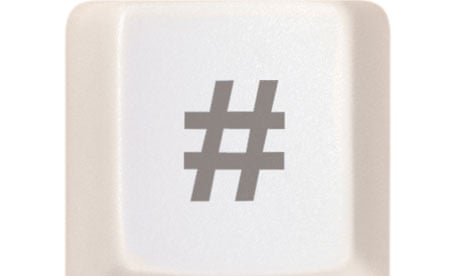We haven't seen a typographical resurrection like it since the @, an obscure accounting symbol meaning "at the rate of", was pressed into service to form the first email address in 1971.
According to the buzz on Twitter and the blogosphere, the rebranded symbol of 2010 is the octothorpe. The what, you say? Did you not know the name for the #, the cross-hatch figure beloved of Twitter users everywhere? A symbol so little used even three years ago that I have just had to press alt+3 on my keyboard to generate one?
Don't worry – almost no one knows it's called an octothorpe, and most of those who do don't call it that. In the UK it's generally known as "hash". In America they call it a pound sign, because it's sometimes used to denote weight in pounds. Elsewhere it's called a number sign (because #3, or "alt+3+3" in my case, means number three) or a "hex".
The term octothorpe was coined by engineers at Bell Laboratories in the early 1960s, who wanted a name for one of two non-number function symbols on the first touch-tone keypads (the other was the *, which they called a sextile). It didn't catch on, and the # key became famous as an ineffectual way of interacting with the robots who work at your bank.
Until, that is, Twitter came along. The octothorpe is the essential symbol in the formation of a hashtag, a marker that allows 140-character tweets to be grouped together by subject (#boringtypographystories, for example). It means all the comments about #xfactor or #imaceleb can be viewed together.
There are a few other symbols on the keyboard awaiting a new life, among them §, which is used to denote "section", the ¶ (or pilcrow, for "paragraph") and the dagger †, used for footnotes when the asterisk has already been deployed, but it won't happen until a need arises.
An ongoing search for a universal symbol to denote irony (the reverse question mark being among the oldest suggestions) has always faltered, partly because it's not really irony unless someone somewhere doesn't get it.

Comments (…)
Sign in or create your Guardian account to join the discussion